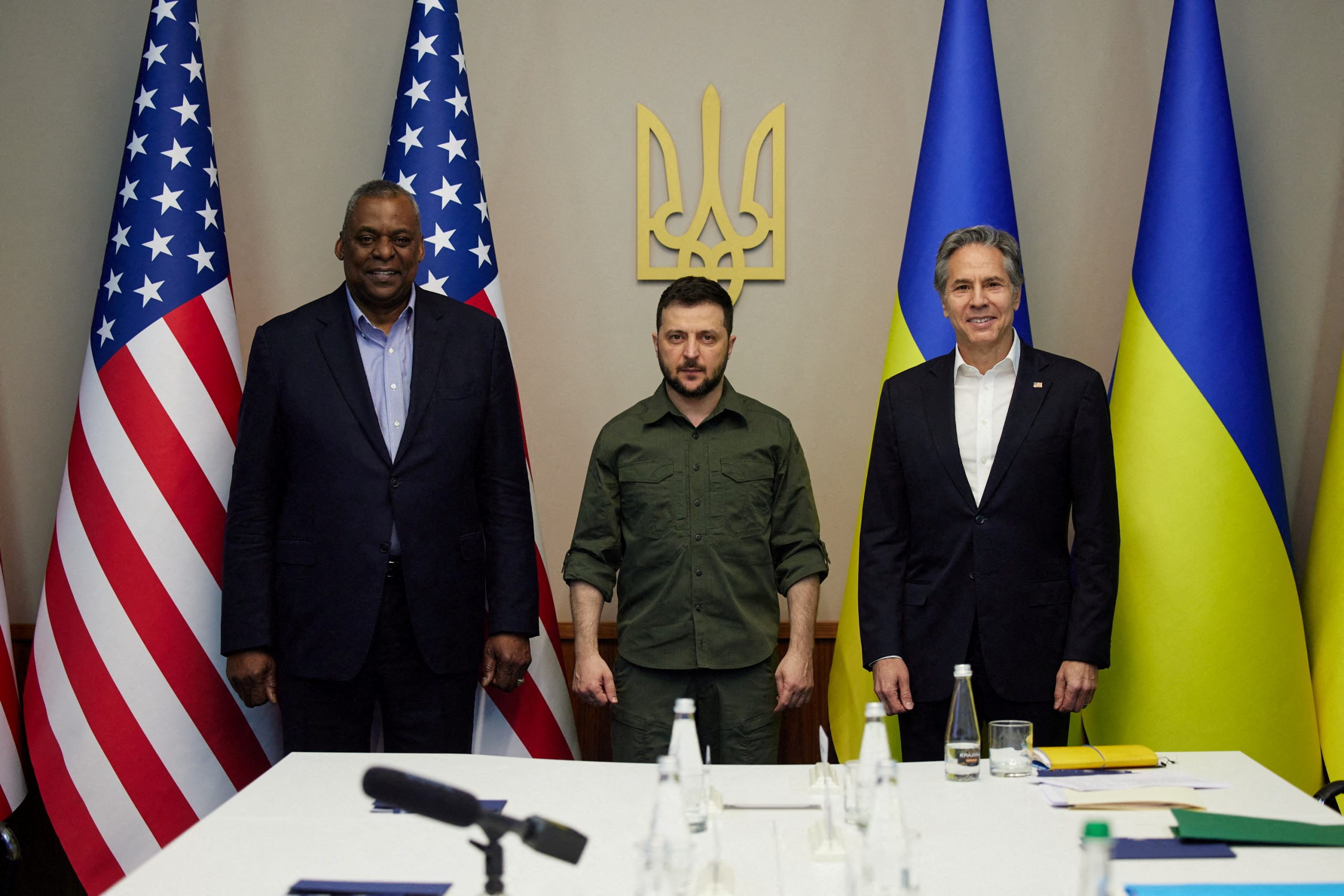
In an unanticipated move, U.S. Defense Secretary Lloyd Austin made a surprise visit to Kyiv, Ukraine, unveiling a substantial $100 million military aid package. This marked his first visit to the Ukrainian capital since April 2022, sparking strategic discussions and reinforcing American commitment to the region.
Reinforcing long-term support
During his visit, Austin engaged in pivotal discussions with key Ukrainian figures, including President Volodymyr Zelenskyy, Defence Minister Rustem Umerov, and Commander-in-Chief General Valerii Zaluzhnyi. He sought to reassure and fortify Ukrainian leadership with unwavering resolve, unequivocally stating, “The United States of America stands in solidarity with you. Our commitment spans the long road ahead.”
The aid package unveiled by Austin holds strategic significance, encompassing indispensable anti-tank weapons, crucial air-defense interceptors, and an additional High Mobility Artillery Rocket System (HIMARS). These meticulously chosen provisions serve as a testament to America’s unwavering dedication to enhancing Ukraine’s defensive capabilities in the face of relentless Russian aggression.
Strategic concerns and congressional debates
Within the corridors of the U.S. Congress, discussions have escalated, amplifying the ongoing debate surrounding aid distribution revealing a rift in perspectives and priorities. On one front, there’s a chorus advocating for a continued and potentially heightened focus on supporting Ukraine, recognizing the pressing need to fortify the nation’s defenses against Russian aggression. Conversely, there’s a distinct emphasis on directing support towards Israel, underlining the complexity of simultaneous commitments to different global allies.
This divergence in congressional opinions and policy priorities sparks a broader conversation encompassing the allocation of taxpayer funds and the delicate balance required to sustain and reinforce multiple international alliances simultaneously. The deliberations in Congress signify a fiscal debate and a fundamental ideological struggle grappling with allocating resources and strategic international engagements in a rapidly changing global landscape.
Ensuring regional stability
Amid escalating tensions, Austin’s visit underscores the importance of sustaining Ukrainian defense capabilities. The ongoing conflict in Ukraine’s eastern regions and recent successes in territories like the Kherson region pose challenges as the cold weather sets in, potentially hampering significant military advancements for both sides.
Austin acknowledged Ukraine’s readiness for winter combat, indicating expectations of heightened Russian aggression. The necessity of continuous aid to prevent Russia from gaining strategic leverage and the potential consequences of reduced support for Ukraine has been highlighted by experts.
Secretary Austin’s visit and the announced aid package symbolize a critical juncture in U.S.-Ukraine relations amidst evolving geopolitical dynamics. The pledge of sustained American backing amplifies the significance of international support in fostering regional stability and deterring further conflict.
As discussions within the U.S. Congress persist, the decision regarding continued aid to Ukraine remains a focal point, shaping not only the immediate security landscape but also the broader geopolitical balance.
